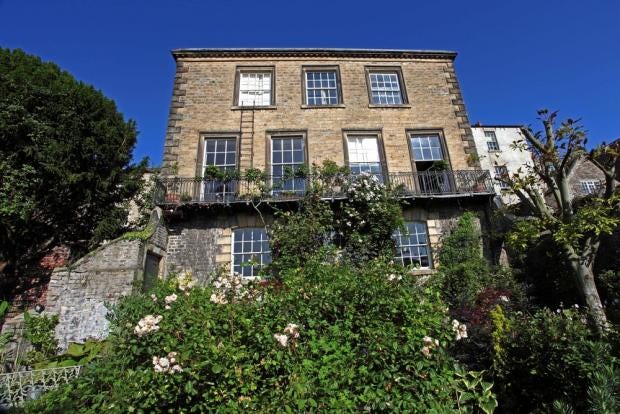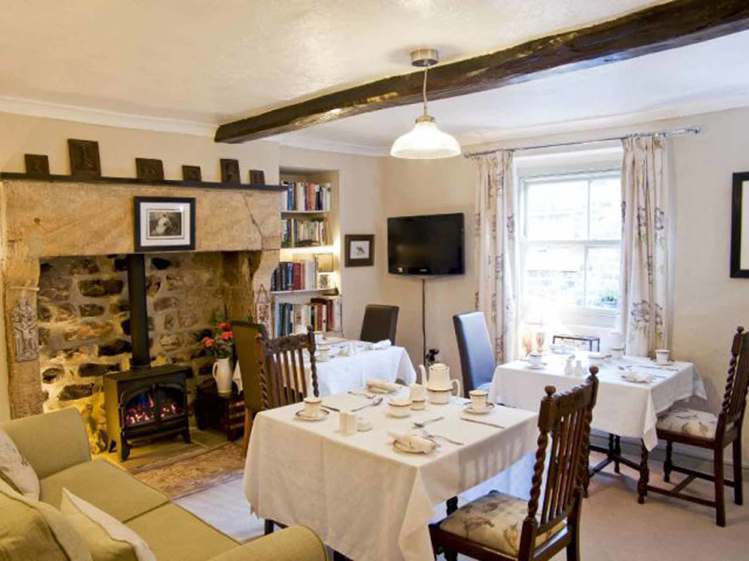最近,不少人擔心陸客不來台灣了,怎麼辦?其實,不少香港、日本民眾喜歡來台灣,各地若能善用在地特色、周全規劃活動,可吸引更多國外或國內旅客造訪,帶來經濟效應,也推動地方創生。
日本金澤市就是一例。古城氛圍結合地方歷史故事,再加上政府、民間力量合作細緻規劃活動,完整規劃的祭典成功吸引民眾多停留幾天,從吃、住到購物,帶動地方繁榮。
-----------------------
● 更多內容,請見《天下雜誌 600期》35週年特別獻禮《為台灣奮鬥的人》
【書法大師 董陽孜設計封面】>> http://bit.ly/28KcqKb
【動畫設計大師 羅申駿設計封面】>> http://bit.ly/28Knjtm
一次性活動再精彩,也難讓旅客多留幾天。日本金澤市將歷史文化變為一系…
Seasoning the Seasons 〜 Kanazawa: An Eternal Love of Beauty and Culture 〜
October 12 Mon. 8:30 / 14:30 / 21:30 (JST)
October 13 Tues. 2:30
http://www3.nhk.or.jp/nhkworld/en/tv/seasoning/201510050600/
Kanazawa is in Ishikawa Prefecture, facing the Sea of Japan in the north. Here, far from Kyoto and Tokyo, a great city was built in the age of the samurai, boasting 300 years of history. The first lord of this vast land, Maeda Toshiie, spared no effort in promoting culture such as crafts and the performing arts. This policy was carried on by his successors, and a small farming town transformed into a flourishing city of culture. An obsession with beauty has always thrived here. Hospitality that gratifies all the senses awaits you.

Ko Sasaki for The New York Times
Canopies of rope protect trees from heavy snowfall in Kenrokuen Garden, the principal attraction in Kanazawa, a history-rich city in the Ishikawa Prefecture on Japan’s western coast.
By INGRID K. WILLIAMS
Published: December 24, 2010
ON a sunny early November afternoon in the Japanese city of Kanazawa, the alchemy of autumn had already begun transforming the city’s beloved Kenrokuen Garden from an oasis of leafy greens into a gold-tinged sanctuary. Workers were busy constructing yukitsuri — thick ropes tied to fragile tree branches, intended to brace them against heavy snowfalls — in dramatic pyramids that soar over the gnarled wood. And the transformation continues as the seasons progress.
“It’s so beautiful, like a black-and-white calligraphy,” Masaki Yokokawa, the owner of Guest House Pongyi, a small hostel that opened in 2009, said of the
garden in winter. And when the icy chill eventually gives way to springtime, the awakening branches will bloom with feathery pink and white cherry blossoms.
With distinct, captivating looks for each season, the garden is the year-round star attraction in Kanazawa, a history-rich city in the Ishikawa Prefecture on Japan’s western coast.
The garden is “a national treasure,” said Junko Morita, an English-speaking liaison who works at one of the city’s tourist offices. “All Japanese know about it.”
It is also part of the rich traditional side of the city, along with a feudal-era castle, well-preserved geisha districts and a dazzling “ninja” temple.
The historic sights now have contemporary company in the form of some decidedly modern attractions that have opened in the last few years. This fusion of the old and the new means that the city spans the centuries in just a few miles. And though, as Ms. Morita noted, Kanazawa has always been on the radar of the Japanese, an increasing number of foreigners are being pulled in by the city’s eye-opening range of temptations.
The tourism office where Ms. Morita works, the city’s second, opened last year as part of an extensive effort by the city to accommodate international visitors to Kanazawa. To that end, the city now boasts a comprehensive
tourism Web site and straightforward, easy-to-navigate tourist bus routes. In May, a group called the Goodwill Guide Network began offering free English-language tours of the garden and the adjacent Kanazawa Castle.
In 2004, the
21st Century Museum of Contemporary Art opened in a striking circular glass building designed by
Kazuyo Sejima and
Ryue Nishizawa, winners of the 2010
Pritzker Prize. Inside, pieces by Japanese artists like Noboru Tsubaki share space with works by
James Turrell,
Anish Kapoor and Jan Fabre. Outside, the periphery is also sprinkled with artworks, including “Colour activity house,” a spiral-shaped, multihued glass installation by
Olafur Eliasson that was unveiled this year.
Modern and ancient styles come together at Kanazawa’s train station, which was revamped in 2005 to include a colossal glass-and-steel dome fronted by an equally large and impressive traditional wooden gate. The station will soon welcome the Shinkansen, Japan’s bullet train, when an extension of the Hokuriku line is completed in 2014. With a direct, high-speed line from Tokyo, travel time between the cities will be cut from about four hours to two and a half. Though this change will most likely be a boon for business and tourism, some residents are wary.
“Some people say that if the Shinkansen comes, the tourists won’t stay in Kanazawa, they will do daytrips,” said Mr. Yokokawa, the guesthouse owner. But for now, “the people who come to Kanazawa want to know Japan more deeply” and visitors are duly rewarded with a glimpse of the real Japan.
Complementing all that glorious
architecture is the still-flourishing tradition of Japanese handicrafts — lacquerware, pottery, kimono design and gold leaf (99 percent of Japanese gold leaf is produced in the city) — which earned the city a
Unesco City of Crafts and Folk Art designation in 2009. With tree-lined canals, wood-paneled teahouses and temple-dotted hills, Kanazawa is reminiscent of another well-preserved, though markedly more touristy Japanese city, Kyoto.
“Kanazawa is called ‘small Kyoto’ because the ambience is similar,” said Mr. Yokokawa, though the cities also share a history. Like Kyoto, “in World War II the Americans didn’t bomb Kanazawa, so many of the city’s old traditional things remain,” said Sakumi Sakai, a retired Kanazawa resident who was in the middle of an English lesson with Ms. Morita at the tourist center.
But it’s the garden that is the finest — and most enduring — attraction.
“This is one of the three most beautiful landscaped gardens in Japan,” said Noboru Orito, a volunteer tour guide for the Goodwill Guide Network. It’s an oft-uttered sentiment, as is the fact that the meticulously groomed garden incorporates the six characteristics — spaciousness, tranquillity, artifice, antiquity, aquatic elements and panoramic views — that collectively create the ideal, balanced Japanese garden. “Gardens with all six features are very rare,” he added.
Adjacent to the garden is the imperial Kanazawa Castle, the former home of the Maeda clan, who ruled the area for nearly 300 years. The original castle was built in the 16th century, but through the years, fires repeatedly destroyed it, so it has been rebuilt several times. The most recent renovations include the re-installment of the castle moat, and this past spring, the reconstructed front gate and rear turret.
Although the castle is impressive, visitors can get an authentic peek into feudal Japan in the Higashi Chaya District, one of only three culturally designated chaya, or entertainment, districts in the country. The area’s narrow streets are lined with two-story wooden teahouses, where geisha once entertained wealthy, sake-drinking clients. At one carefully preserved Edo-era chaya house, the museumlike Shima, visitors can sip tea and explore tatami-matted rooms where some of the geisha performances took place.
For a glimpse into a world filled with a different sort of intrigue, the Myoryuji Temple, commonly called the Ninja Temple, is unparalleled. Though the tour guides insist there is no connection to furtive masked men, the 23-room temple has all the trappings you would expect from a ninja hideout — hidden passageways, pitfalls, trap doors, optical illusions. Even the external structure is deceiving: what appears to be a two-story temple actually includes four stories with seven internal levels, part of an elaborately layered maze.
This emphasis on refinement and complexity can be found in Kanazawa’s food scene, which centers around elaborate meals that rival any kaiseki in Kyoto, and boisterous izakayas, or gastropubs, serving endless cups of local sake and plates of fresh vegetables from the nearby Kaga plains. But the one dining experience that nearly every local recommends is kaiten, or conveyor-belt, sushi.
“Kaiten sushi started here,” said Ms. Morita from the tourist office, explaining that the company that manufactures the miniature conveyor belts, which wind along a sushi bar transporting tiny plates to hungry diners, is based in Kanazawa. And since the nearby Sea of Japan supplies the city with fresh, locally caught seafood year-round, the bounty, like the Kenrokuen Garden, can be enjoyed in any season.
IF YOU GO
From Tokyo, the train to Kanazawa typically takes four to five hours and requires at least one change. Schedules and ticket prices vary; a useful, comprehensive search engine in English can be found at
hyperdia.com.
WHAT TO SEE
Kenrokuen Garden (Kenroku-machi; 81-76-234-3800;
pref.ishikawa.jp/siro-niwa/kenrokuen/e/
index.html)
Kanazawa Castle (Marunouchi; 81-76-234-3800; pref.ishikawa.jp/siro-niwa/kanazawajou/e/index.html)
Shima (1-13-21 Higashiyama; 81-76-252-5675;
ochaya-shima.com)
At
Myoryuji Temple (1-2-12 No-machi; 81-76-241-0888), advance reservations are required for tours, which are given only in Japanese. Tour guides will, however, provide an illustrated, English-language booklet with a summary of the tour.
21st Century Museum of Contemporary Art (1-2-1 Hirosaka; 81-76-220-2800; kanazawa21.jp)
WHERE TO STAY
Luxury is scant in Kanazawa, but there is a cluster of standard business hotels conveniently situated near the train station.
One comfortable, inexpensive option is the
Dormy Inn Kanazawa (2-25 Horikawa-shinmachi; 81-76-263-9888;
hotespa.net/hotels/kanazawa) with doubles from 6,600 yen, about $80 at 82 yen to the dollar.
For something different, reserve the Japanese-style room (6,000 yen for two people) at the backpacker favorite
Guest House Pongyi (2-22 Rokumai-machi; 81-76-225-7369;
english.pongyi.com), which opened in 2009.
WHERE TO EAT
Mori Mori Sushi (Forus 6F; 3-1 Horikawa-shinmachi; 81-76-265-3510), on the sixth floor of the Forus department store next to the train station, is the hands-down local favorite for kaiten sushi. Don’t miss the bincyo maguro toro and unagi.
For a more refined experience, try
Komatsu Yasuke (APA Hotel Kanazawa-Katamachi 1F; 2-21 Ikeda-machi; 81-76-261-6809), considered one of the best sushi restaurants in Japan. Reservations required.
Shikino-An (Koide 1F; 19-4 Takaoka-cho; 81-76-232-6844) is a cozy spot along the canal northeast of Nagamachi, the so-called samurai district, and the ideal place to warm up with some soba, miso soup and crispy tempura vegetables.














